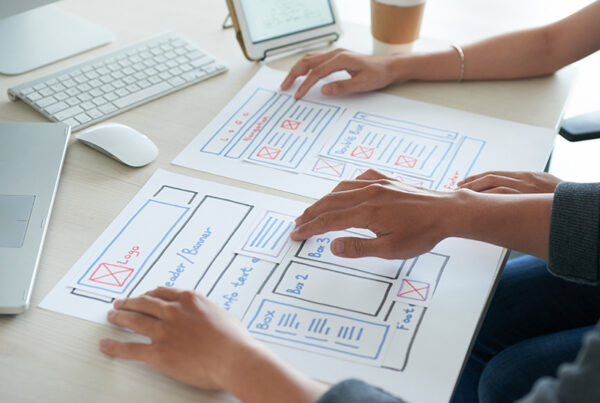Summary
Many B2B SaaS companies struggle to convert free users to paid subscribers, often because of a flawed upgrade experience rather than product issues. Common barriers include confusing checkout processes, unclear pricing, or vague trial terms that stall product-led growth. The key to boosting conversions lies in removing friction from the upgrade path through intelligent UX and self-service design. This guide explores four practical strategies to seamlessly convert free users to paying customers, eliminating the need for direct sales intervention.
Key Takeaways
- Friction in the upgrade path, not product quality, is often why B2B SaaS users don’t convert from freemium to paid.
- Streamlining the checkout flow by limiting required fields and optimizing for mobile significantly improves conversion rates.
- Effective upsells act as product education, clarifying value and offering solutions to user-expressed needs, rather than feeling like a sales pitch.
- Eliminating uncertainty through transparent language and clear terms at checkout builds user confidence and drives conversions.
- Integrating digital wallets and social sign-ons reduces user effort and accelerates the checkout process, proving to be a low-effort, high-impact conversion tactic.
When B2B SaaS buyers love your product but won’t upgrade, the issue usually isn’t the product—it’s the experience. They hit a wall: confusing checkout pages, vague pricing tiers, unclear trial terms. For operators, this is where product-led growth stalls. The fix isn’t more features or harder sells. It’s removing friction from the upgrade path. Let’s walk through four proven tactics to convert free users without a sales call—just clean UX and smart self-service design.
1. Fix the Upgrade Flow: Cut the Clutter, Keep the Clicks
Most freemium-to-paid conversions fall apart during checkout. Too many required fields. Too much legalese. Not enough clarity. Tools like Zapier and Figma strip their flows down to essentials: email, plan, payment—done. On mobile, they keep CTAs thumb-friendly and auto-fill forms with social sign-ons. Tactics to implement:
- Limit required fields to only what’s necessary (no team size or job title).
- Optimize for mobile with sticky CTA buttons and auto-formatted inputs.
- Use real-time plan summaries to show what users get as they upgrade.
Zapier, for example, defaults to freemium plans but makes upgrade options visible, so users aren’t confused but still nudged toward more value.
2. Use Upsells as Product Education
Upsells shouldn’t feel like sales tactics—they should feel like clarity. Hootsuite offers a prominent upsell option to skip the trial with a discounted plan. It speaks directly to users who already understand the value and want to commit. Meanwhile, Canva explains exactly when the free trial ends and how to cancel—earning trust by being explicit. Tactics to implement:
- Show free vs. paid feature differences in-app, not just on pricing pages.
- Use prompts like “Need more reports?” or “Want to integrate Slack?” that lead to plan upgrade paths.
- Offer the option to skip trials if users are ready to buy—pair it with a compelling one-time offer.
Upsells work best when they answer a question the user is already asking.
3. Eliminate Uncertainty at Checkout
Nothing kills conversion like hesitation. Users worry: Will I be charged now? Can I cancel later? Is this trial really free? Top SaaS platforms now place clarity at the core of the checkout experience:
- Use button text like “Start My Free Trial” (not “Pay Now”).
- Show exactly when payment begins and what the cancellation window looks like.
- Include FAQs right inside the checkout UI to handle concerns in the moment.
Transparent language builds confidence—and that confidence converts.
4. Integrate Wallets and Social Sign-Ons to Accelerate Checkout
Friction isn’t just about confusing copy. It’s also about extra steps. Let users log in with their Google or Microsoft accounts. Let them pay with Apple Pay or Google Pay. These small touches eliminate typing, speed up the flow, and reduce errors. This is especially critical in B2B SaaS, where users are juggling tools across devices and platforms. For operators, this is the lowest-hanging fruit: a few lines of OAuth or Stripe integration can significantly boost free-to-paid conversion—without changing anything in your product itself.
Takeaway for Operators
To convert more freemium users, don’t over-engineer your upgrade flow. Simplify it. Clarify it. Build trust with transparency and speed. If you’re already using a product-led growth motion, these tactics can plug the leaks in your funnel—no SDR needed. For more tactics on optimizing conversion paths, see our breakdown of real-world SaaS self-service checkout examples or dive deeper into self-service checkout design for SaaS.
Conclusion
Converting more freemium B2B SaaS users hinges on simplifying, clarifying, and building trust within the upgrade journey. By focusing on streamlined checkout flows, educational upsells, transparent terms, and accelerated payment options, businesses can effectively remove conversion barriers. These product-led growth tactics empower users to self-serve their way to a paid plan, making sales calls unnecessary and optimizing your funnel for sustained growth.
Related FAQs
What’s the fastest way to increase freemium conversion without a sales team?
Strip your checkout down to essential fields, use social sign-on, and clarify trial terms and upgrade benefits within the UI.
How do you make upsells feel natural in B2B SaaS?
Frame them as usage unlocks, not plan pushes. Trigger prompts based on behavior and explain the value clearly rather than offering blanket discounts.
Should I require a credit card for the free trial?
If you use an opt-out model, show clear messaging that no charges apply until the trial ends—and give easy access to cancellation controls.
You May Also Like
 Designing Self-Service Checkout for SaaS
Designing Self-Service Checkout for SaaS
Designing Self-Service Checkout for SaaS
 Examples of PLG Self-Service Checkout Pages
Examples of PLG Self-Service Checkout Pages
Examples of PLG Self-Service Checkout Pages
 Freemium to Paid: How to Get B2B SaaS Users to Upgrade
Freemium to Paid: How to Get B2B SaaS Users to Upgrade



